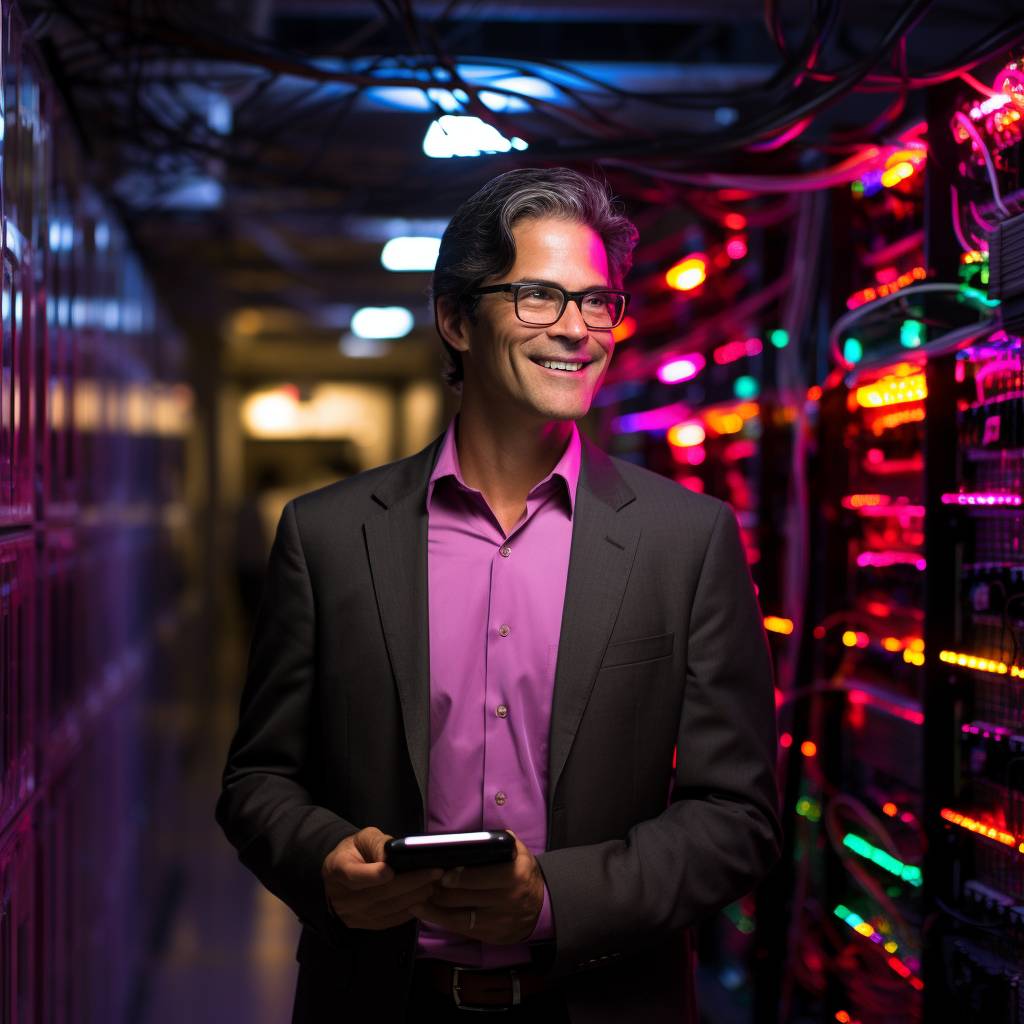The quest for energy efficiency in data centers is a constant concern for industry leaders. Clint Schow, a professor of electrical and computer engineering at UC Santa Barbara, has been at the forefront of this pursuit, collaborating with Meta (formerly Facebook) for over half a decade.
The result is a ground-breaking optical link that boasts a 200 Gbps single-wavelength transmission speed while consuming only 1.5 watts of power.
This innovative optical link was developed by Schow’s team, which included students and researchers from the Department of Electrical and Computer Engineering (ECE). They created an integrated package combining photonics with electronic circuits, a project that also included the development of network architectures leveraging photonic switching.
The project was a collaborative effort with Intel, spearheaded by Aaron Maharry, who recently completed his Ph.D. in Schow’s lab. The idea for the link was originally conceptualized by Professor Emeritus Larry Coldren, a pioneer in photonic integrated circuits (PICs), around twelve years ago.
In a data center, an optical link transfers information from one networking switch to another. This process involves an electronic signal traveling from the first switch to a transceiver module, which then converts it to an optical signal. This signal is then transmitted via fiber to be received at the other end, where it is converted back into an electrical signal.
Maharry’s research, presented at the Optical Fiber Communication Conference (OFC), represents a significant step towards next-generation datacenter networks built on coherent optical links. These links offer the potential for data centers to increase network throughput economically while reducing energy consumption.
The key to Maharry’s research is the successful integration of optical devices and electrical circuits. This level of integration and design has led to impressive results, earning recognition from industry professionals at the OFC.
In simpler terms, coherent optical links function similarly to a car radio. Just as a local oscillator in a car radio boosts the signal of the selected station, the local oscillator in coherent optics – a laser – enables more sensitive signal detection.
Currently, many data centers rely on intensity modulation direct detection (IMDD) links, where information is encoded by modulating only the power levels of light. However, due to increasing data rates, there is growing interest in replacing IMDD links with more scalable coherent links.
Maharry and his team have designed an analog-coherent detection link architecture that converts received bits directly to digital electrical signals. This architecture removes the need for power-consuming digital-signal processing functions required for longer-reach conventional coherent links but unnecessary for shorter distances within a data center.
The challenge lies in making this technology both energy- and cost-efficient. To compete with direct-detection technologies, Maharry’s team had to redesign all the chips and optimize them for power efficiency. They managed to perform complicated signal-processing functions in the analog-optical domain, offloading them from the DSP chip and saving significant power.
This low-power coherent link technology could enable all-optical switching, an emerging technology in data centers. Although this isn’t a new concept, its application in large datacenter networks was not considered until recently when Google revealed their deployment of optical switches in datacenter and machine-learning clusters.
The development of this energy-efficient optical link is a significant step forward in the electronics industry, particularly for companies dealing with large data centers. It not only promises increased network throughput but also offers considerable savings in energy consumption, making it a more sustainable and cost-effective solution for the future.
